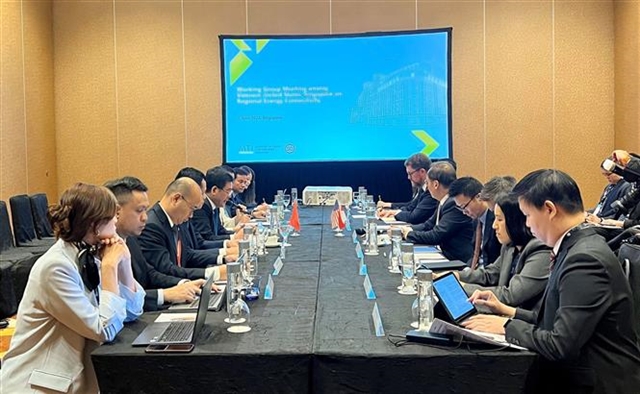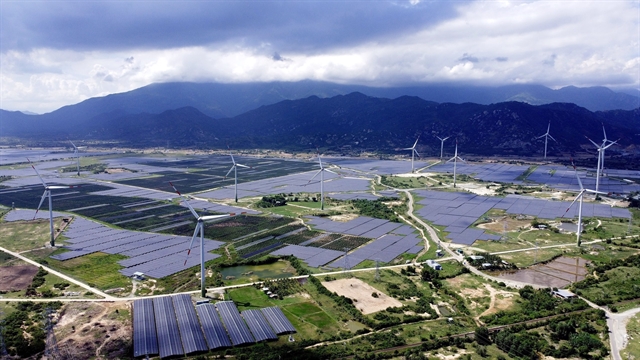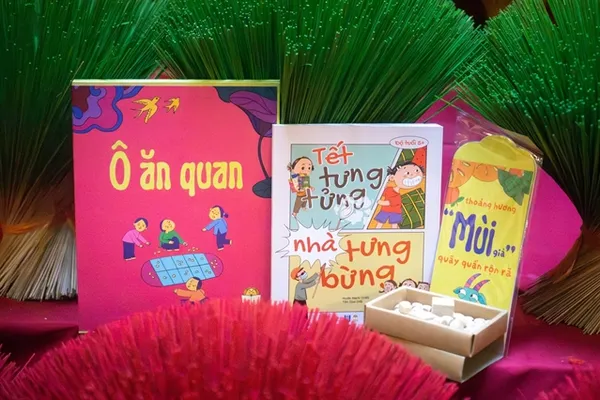 Economy
Economy

 |
| Bård Vegar Solhjell, director general of the Norwegian Agency for Development Cooperation. VNS Photo Nguyễn Hằng |
Norway's total aid to Việt Nam has so far reached about US$320 million. Could you share some successful NORAD stories?
Việt Nam is an important partner to Norway for several reasons. The first is the ambitious goal of Việt Nam to become net zero in 2050. Another reason is Việt Nam’s ambitious goal on cutting plastic pollution. Also, Việt Nam is an important partner of Norway in many social and economic issues.
There are many successful stories. One thing that many do not know is that Norway is a big founder of mine clearances in Việt Nam, we have worked in this area for decades. The Americans dropped an enormous number of bombs on Việt Nam and many of them are still in the ground. Thus, we fund, through the Norwegian People’s Aid, a global organisation, mine clearance and we have been doing that for a very long time. The work is very important because every year quite a few people die from stepping on explosives.
We also fund a global public library in Việt Nam. It is a digital library for those areas where education is not so accessible, especially for vulnerable groups with disabilities. We are working with UNICEF on that.
However, I think that the main potential between Việt Nam and Norway is a partnership in the green transition of Việt Nam. It is really important to develop energy. Norway has a lot of competence in energy in offshore wind, which is also being developed in Norway and in solar, which we have big Norwegian companies, but also competence in energy institutions.
Coming next plastic pollution in oceans. Việt Nam, like Norway, is an ocean nation. Fishery is very important. Việt Nam also has a long coastline and plastic pollution is a threat to tourism. People do not want to see plastic waste in the ocean and it is also a threat to fisheries. So, Norway is working in several ways here to help Việt Nam.
We have a project where we try to reduce waste as fuel in the cement industry to help Việt Nam solve two problems at the same time. We use the waste, which is now just in the landfill, we burn it in the cement industry instead of burning coal. Therefore, we can cut the costs for the industry and also cut emissions from coal burning.
Additionally, we are negotiating with Việt Nam on an agreement to help Việt Nam sell carbon credits from the impressive work in the forests of Việt Nam.
Việt Nam is doing a lot to keep more of the forests. That is important for the global climate. We have entered into an agreement where an international organisation can buy carbon credit from the forests in Việt Nam. Then, Việt Nam can fund further green transition. I think in the past, the headline between Việt Nam and Norway was of a donor to a poor country, but now it has become a partnership between the two countries.
 |
| A wind power plant complex combines with solar power in Thuận Bắc District in the coastal south-central province of Ninh Thuận. VNA/VNS Photo Huy Hùng |
How do you evaluate the cooperation between Việt Nam and Norway in areas such as the marine economy, the circular economy and green transformations?
I think it is promising but it needs more attention and we need to move from project to breakthrough. The potential in cooperation in marine economy, circular economy and green transformations is big and there are many on-going projects that are good. Norway and Việt Nam are good partners, but we could become even stronger partners if we are able to make breakthroughs.
For instance, in terms of offshore winds in Việt Nam. Offshore wind could be a really important part of Việt Nam’s energy supply and also could be exported to other countries. Norway has companies but also institutions that are strong.
Việt Nam is a country using quite a lot of coal with high emissions. If Việt Nam wants to be successful in meeting the goal of cutting down the emissions and implementing green transformations, it might expect the international community to finance that. So, it is reasonable that Norway finances parts of that transition. I think that this is where the opportunities are.
Việt Nam should also do more to be successful in renewable energy, marine technology, offshore wind and the circular economy. Việt Nam needs to have good regulations and verification processes. Norway has to find the finances and enter into agreements to get results with Việt Nam. I think the future of Việt Nam-Norway collaboration is about to grow, transition and seek a way to do that together.
How will Norway’s official development assistance help Việt Nam in developing the marine economy and green transformations in the future?
We will continue to provide development assistance to Việt Nam, but I think it will be limited because Việt Nam now has become a middle income country. Actually, the amount will not be the most important, but the competence that we can share and the partnerships they bring. In a circular economy and marine technology, we have run projects and we have done marine planning, with UNDP and the Vietnamese Government.
For almost 20 years, Norway has had what we called marine special planning. That means Norway has plans for our seas where we look at what we should use them for. The plans take into account offshore oil and gas, offshore wind, fisheries and seafood shipping routes. The plans also look at the ecological qualities and make sure that we take care of nature and of the fishery stocks. So we do not overfish too much. The planning process has brought in so many different ministries, so that when you are creating a plan, it takes different interests into account.
There has been a lot of international interest from other ocean nations, not only Việt Nam, in the plan.
Việt Nam has been investing in offshore wind and it can look at which areas are better for offshore wind. But it should also consider where those plans collide with other interests, like for instance, fisheries. This way of planning is more sustainable and is also more predictable for that industry. VNS




